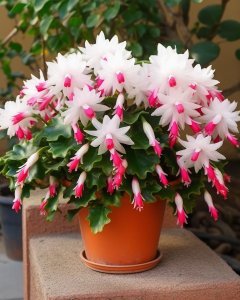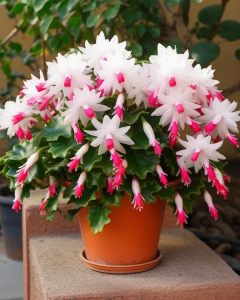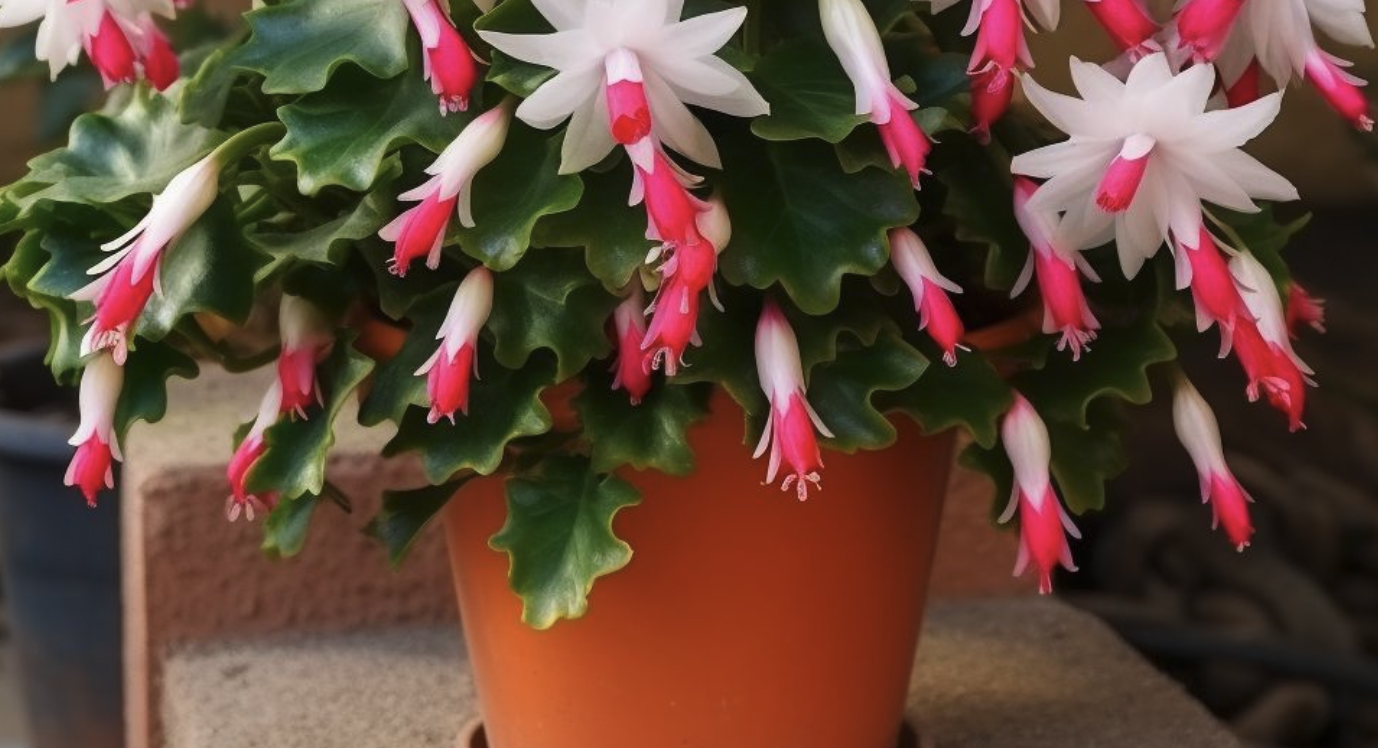The Christmas cactus has earned a valued spot as a festive houseplant throughout the holiday season thanks to its beautiful flowers and easy maintenance needs. But if you cultivate this plant in a container, you may spread out your enjoyment of it over the entire year with the appropriate strategy. In addition to bringing a festive atmosphere into your home, caring for a Christmas cactus in a container also provides a means of long-term maintenance and satisfaction. In this thorough instruction, we’ll go into great detail on how to properly grow a Christmas cactus in a container and preserve its health and vitality for a long time.

We’ll go through every important aspect of growing a Christmas cactus in a container, from choosing the proper container and potting mix to understanding the plant’s requirements for light and temperature. We’ll look into irrigation techniques, humidity requirements, fertilizer schedules, and the need of pruning and upkeep. We will also discuss how to trigger flowering, how to understand the plant’s dormant stage, and methods for controlling pests. With these instructions in hand, you’ll be prepared to grow a healthy Christmas cactus that will adorn your house with stunning blooms and lush greenery for many years to come.
Choosing the Ideal Container:The healthy growth of your Christmas cactus is greatly influenced by the selection of an appropriate container. To avoid water accumulating, choose a pot with drainage holes at the base. The best containers are made of plastic, clay, or ceramic because they retain moisture without becoming overly saturated.
Create a well-draining potting mix for your Christmas cactus before planting it. Peat moss, perlite, and sand mixed together work well. Make sure the pH level of the potting soil is between 5.5 and 6.5, which is somewhat acidic. Place the Christmas cactus in the pot, leaving room for its roots to spread out. Avoid planting too deeply; the cactus prefers shallow embedding.

Christmas cacti thrive in diffused, indirect light. Lighting and temperature. To prevent leaf scorching, place your container in a location that receives bright, filtered sunshine while protecting it from direct sunlight. Keep the temperature between 15°C and 21°C (60°F to 70°F). For the start of buds, cooler temperatures of roughly 50°F (10°C) are advantageous.
Humidity and Watering: Careful watering is essential for the health of your Christmas cactus. When the top inch of the potting mix seems dry, thoroughly water the plant. To prevent root deterioration, make sure the holes have adequate drainage. By spraying the plant or putting a tray of water nearby, you can gently increase humidity levels during the flowering stage.
Throughout the growing season (spring and summer), feed your Christmas cactus with a balanced houseplant fertilizer every two to four weeks. To avoid overfeeding, dilute the fertilizer to half the recommended concentration. During the plant’s dormant season (autumn and winter), while it is dormant and resting, avoid fertilizing.
Pruning and Maintenance: Regular pruning is essential to keep your Christmas cactus vibrant and attractive. Trim the plant after blooming to encourage denser growth and to shape it. Remove any tangled, corrupted, or expired branches. You can grow new plants from these cuttings through propagation. Regular leaf cleaning with a damp cloth avoids dust buildup and maintains the health of the foliage.
Dormancy and Flowering: Christmas cactus require a dormant period in order to allow for flowering. Reduce watering and let the plant rest for about six weeks in the fall in a cool, dark place (50°F-55°F or 10°C-13°C). After this time, reintroduce light gradually and start watering regularly again to encourage blooming.
Pest control: Being vigilant is essential to fending off typical houseplant pests like mealybugs and spider mites. Conduct routine inspections to look for signs like webbing or lumps that resemble cotton. If pests are found, treat the afflicted areas with insecticidal soap or neem oil to get rid of them.

